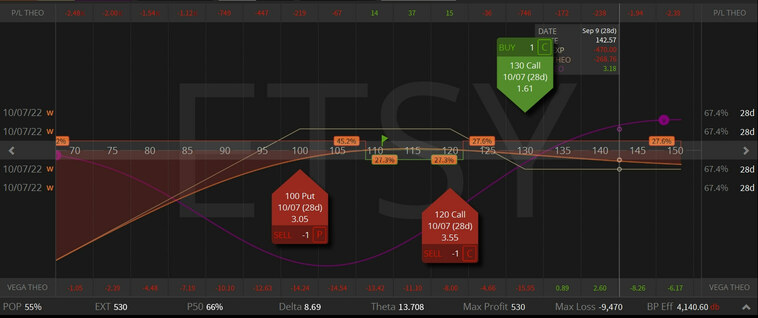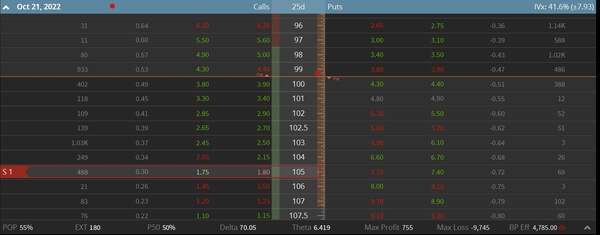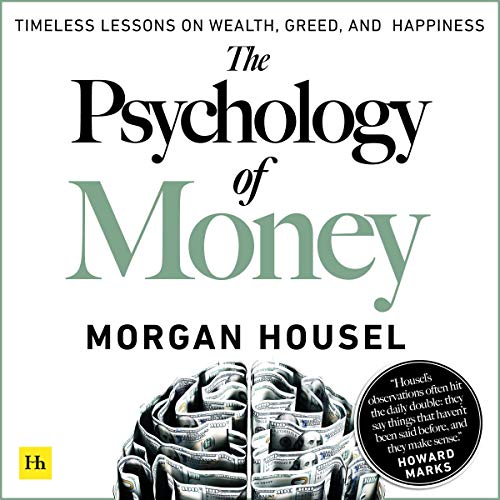What is the difference between stocks and options (Stocks vs Options)
Difference between stock and options
Are you new to the world of personal finance? Confused about the difference between stocks and options? You’re not alone. In this blog post, we’ll break it down for you and explain the pros and cons of each investment. The age old debate Stocks vs Options! Keep reading to learn more!
Table of Contents
ToggleStocks vs Options
When it comes to investing in the stock market, there are two main approaches that I prefer: stocks and options. Both have their own set of pros and cons, so it’s important to understand the difference between the two before putting your hard-earned money at risk.

Stocks
Stocks are a more traditional investment, and people tend to believe they are less risky than stock options. They also offer the potential for long-term growth, which can be helpful if you’re looking to build your wealth over time. However, stocks can also be volatile, and you may not see any immediate gains from your investment.
Stock Options
Stock options, on the other hand, offer you more flexibility when it comes to your trading strategy. Buying options can offer the potential for quick profits or losses and are usually direction based. On the other hand selling options can provide investment income no matter which direction the market moves. They’re often used by traders who are looking to make money off of short-term movements in the stock market but can also be used to hedge a position or for position entry. However, because of their volatile nature, a stock option can be riskier than stocks.
So, which is the better investment? It depends on your goals and tolerance for risk. If you’re looking to invest for the long haul and don’t mind weathering some ups and downs, stocks may be a good choice. However, if you’re looking for more flexibility in your trading, stock options may be a better bet.
What's the difference between a stock and a stock option (stocks vs options)?
Stocks are a type of security that represents equity ownership in a company. When you buy stock, you become a part of the company and own a part of its assets. This gives you a claim on the company’s profits and assets, and you can usually sell your stock at any time.
Stock options, on the other hand, are a type of derivative security. This means that they derive their value from another security, in this case, underlying stock. When you buy a stock option, you’re not actually buying shares in the company; instead, you’re buying the right to purchase shares at a set price in the future. This gives you the chance to make a profit if the stock price goes up or down.

The benefits of stocks
Many people view the stock market as a risky investment, but stocks historically have been a relatively safe and effective way to grow your money. Unlike stock options, which can become completely worthless stocks always have some value. Even if the stock market drops, you tend to be in the market for a much longer time, hanging onto your position until the stock market rebounds.
Dividend stocks
Dividends stocks have long been a popular investment and for good reason. Not only do they offer the potential for capital appreciation, but they also provide a source of steady income. In addition, dividend stocks tend to be less volatile than other types of stocks, making them a good choice for risk-averse investors. Finally, owning dividend stocks can be a tax-efficient way to invest, as dividend payments are taxed at lower rates than other types of income. For all these reasons, dividend stocks are an attractive investment for many people.

The benefits of stock options
When it comes to investing in the stock market, there are two basic approaches that traders use to generate returns: buy and hold or selling options. Each approach has its own set of risks and rewards, but in general, selling options provide a superior return over buy-and-hold investing.
Here’s a look at why that’s the case:
With buy-and-hold investing, you’re essentially buying shares of a stock or other asset and holding onto them for the long term. This is a relatively low-risk strategy, as you’re not exposing yourself to the daily and weekly volatility of the stock market. However, your returns are also limited by the stock’s underlying growth potential.
On the other hand, selling options is a more active approach to investing. When you sell an option, you’re essentially betting that the stock price will not move above or below a certain level. If the stock price does not reach your target level, you keep the entire premium that you received for selling the option.
However, if the stock price does reach your target level, you may be obligated to buy or sell shares at that price. This can be a riskier proposition than buy-and-hold investing, but it also has the potential for higher returns.
The key difference between these two approaches is that with buy-and-hold investing, you’re relying on the underlying growth potential of the stock, while with option selling, you can profit by either being correct directionally or from the stock’s lack of movement.
In general, selling options is a more efficient way to trade the stock market. You’re not tied to any one stock or investment, and you can generate returns regardless of whether the market is going up or down.
What’s more, options have the added benefit of price decay over time (this is known as “theta”). This means that over time, your chances of making a profit on your option trade increase as time passes.
So if you’re looking for a superior return on your investment, selling options is likely your best bet. Just make sure that you understand the risks involved before getting started.

Getting started with options
Before you get started investing with stocks or options you will need to open a brokerage account. Brokerage services allow you to buy and sell options contracts, as well as provide other features such as margin accounts and research tools. When you open an account, you will need to fund your account by wire transfer, ACH transfer, or check. Once your account is funded, you can begin trading options.
Which Brokerage to use
Depending on the brokerage service you use, you will have access to multiple online tools. Some brokerage services also offer mobile apps that allow you to trade on the go. I use Tastyworks for all my options trading strategies. They offer low-cost option contracts, have amazing customer service, and provide great tools for selling options.
Before you start trading, it’s important to familiarize yourself with the different types of options and how they work. Otherwise, you could end up making trades that are not profitable. Options can be a great way to generate income, but you need to know what you are doing first. Let’s take a look at how options work
The difference between buying and selling options
When you buy an option, you have the right, but not the obligation to exercise the option. You are simply paying for the right to buy or sell a security at a set price within a certain timeframe. If the price of the security goes up, you can exercise your option and sell it for a profit. If the price goes down, you can choose not to exercise your option, sell for a loss, or let the option expire.
Selling an option is different. When you sell an option, you are agreeing to buy or sell a security at a set strike price within a certain timeframe. If the price of the security goes up, you will have to buy it at the agreed-upon price, even if it is above the current market price. If the price goes down, you get to keep the option premium as compensation for taking on this obligation. As such, selling options is sometimes considered riskier than buying options.

The difference between Calls and Puts
When it comes to options trading, there are two main strategies that traders use to generate income: selling calls and selling puts. Both of these strategies involve the underlying asset, which is the security on which the option is based.
Call Options
When selling calls, the trader is selling the right to buy particular stocks at a certain price. The trader will only make a profit if the underlying asset remains below the strike price. If the underlying asset rises above the strike price when the options expire then the trader will lose money. Check out a favorite strategy of mine the Covered Call!
Put Options
When selling puts, the trader is selling the right to sell the underlying asset at a certain price. The trader will only make a profit if the underlying stock remains above the strike price before the expiration date. If the underlying asset falls below the strike price, then the trader will lose money. As you can see, these two strategies are quite different. Selling a Cash Secured Put is the first strategy everyone should learn!
One involves betting that the underlying asset will go up, while the other involves betting that it will go down. Both puts and calls can be used in conjunction with the rest of our stock portfolio to reduce risk and increase income. If you are looking for an options strategy that will work for you, look through some of my articles on investing and options strategies.
How to decide which is right for you
When it comes to the stock market, there are many different options for investors. Each option has its advantages and disadvantages, and the best choice for one investor may not be the best choice for another. When considering either investing in stocks or using options, it is important to understand the risks and potential rewards of each.
Stocks are ownership interests in a company that entitles the holder to certain rights, such as the right to vote on corporate matters and receive dividends. When you buy stocks, you are hoping that the stock will increase in value so that you can sell it at a profit. However, stocks can also go down in value, which would result in a loss.
Options can be either call options or put options. A call option gives the holder the right to buy stock, while a put option gives the holder the right to sell stock. When you sell options, you are hoping that the stock will not reach the strike price so that you can keep the premium paid by the buyer. However, if the stock does reach the strike price, you may be obligated to sell (or buy) shares at a price that is below (or above) the current market price.
Each option has its risks and potential rewards. Stocks offer the potential for long-term capital gains, but they also come with the risk of short-term losses. Options offer the potential for high returns, but they also come with the risk of having to take on an unwanted position in a stock. Ultimately, deciding whether to buy stocks or sell options is a personal decision that depends on your investment goals and risk tolerance.
Final thoughts
So, which is the better investment strategy for you- trading stocks or selling options? The answer depends on your personal preferences and how much time and effort you want to put into watching the market. If you’re not interested in keeping track of stock prices and prefer a more hands-off approach, buying stocks may be the better option for you. However, if you are willing to put in a little extra work each day to follow the market and want the potential for higher returns, then selling options may be a better choice. Whichever route you choose, make sure that you do your research so that you understand what risks are involved before making any decisions. How do you trade stocks? Do you like buying stocks or selling options better? Let me know in the comments below!





![Webull vs Robinhood [2023]: The Winner is Clear](https://pennypincher.blog/wp-content/uploads/2022/10/VS-2-768x432.png)


